Malleable iron fittings
What is malleable iron fittings?
M.I. Pipe Fittings hold two different pipe parts together and direct the gas and liquid movement. Some malleable pipe fittings are threaded, meaning that they have grooved ends that allow plumbers to screw the pipe fittings on the pipes, letting plumbers connect different pipes together.
Malleable iron fittings are durable, temperature resistant and they can also withstand high mechanical stress making them greatly popular in plumbing and pipework industries. These types of fittings are often galvanised with a standard jointing technology enabling them to be used safely in a broad range of applications.
There are many advantages of using malleable iron pipe fittings including shock and corrosion resistance and mechanical strength. If the fittings are galvanised with highly pure zinc they can be used to transport drinking water. The narrow threads help to achieve precise alignment when sealing, reducing the likelihood of leakage from the pipes.
Jianzhi Group is a professional malleable iron pipe fittings manufacturers & suppliers,JianZhi Group have a great range of malleable iron pipe fittings to meet all your plumbing and pipework requirements.Wholesale Price. Get all malleable iron pipe fittings info in Malleable Iron Fittings Catalog 2022.pdf
Fitting Types
There are many different malleable iron fitting types available depending on the application they are required. Pipe fittings are available self-colour (Black Pipe Fittings) or Galvanized Pipe Fittings finish and include:
Elbows , Tees , Crosses , Reducers , Sockets , Nipples , Plugs ,Caps , Nuts
Showing 25–48 of 69 results
-

Galvanised Pipe and Fittings Union Nut Fig. 374
-
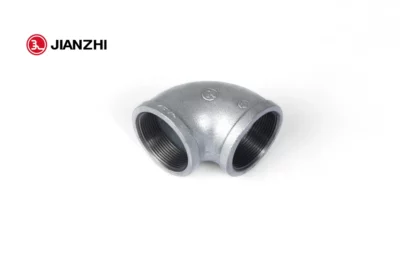
FIG.90 Elbow 90°, Equal
-
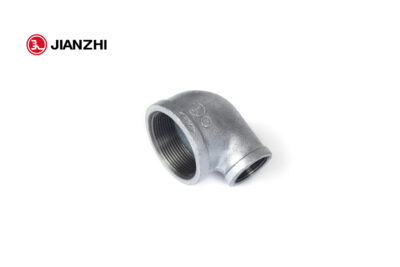
Pipe Joints 90 Degree Elbow Reducing Fig.90R
-
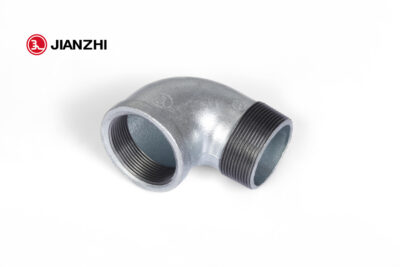
Cast Iron Fittings 90 Degree Elbow Fig.92
-
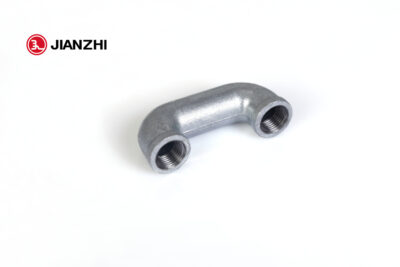
180 Degree Return Bend Fig.90U
-

Galvanized Union Elbows Conical Seat Male and Female Fig.98
-

GI Pipe Union Elbows Conical Seat Fig.96
-
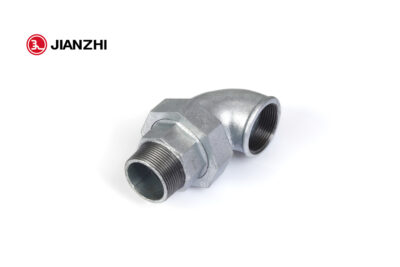
NPT Female Union Elbows Flat Seat Fig.97
-
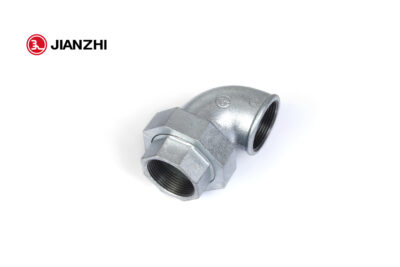
BSP Union Elbows Flat Seat Fig.95
-
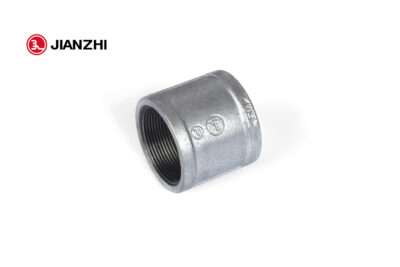
FIG.220 Socket, Part Threaded
-

FIG.130 Tee Equal
-
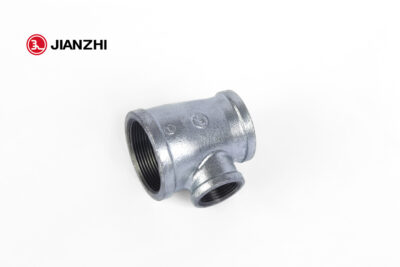
Plumbing Fittings Tee Reducing Fig.131R
-
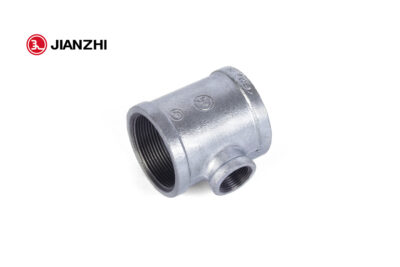
Pipe Fittings Tee Reducer Fig.130R
-

Pipe Connector Lateral Y Branch Tee 45 Degree Fig.165
-
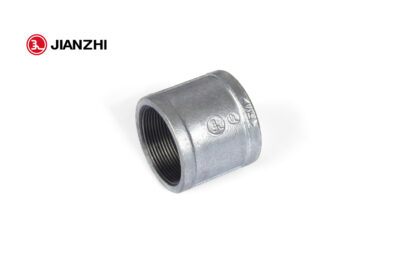
NPT Fitting Socket Entire Threaded Fig.270
-
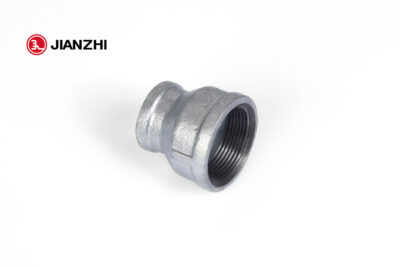
Gas Pipe Fittings Socket Reducing Fig.240
-
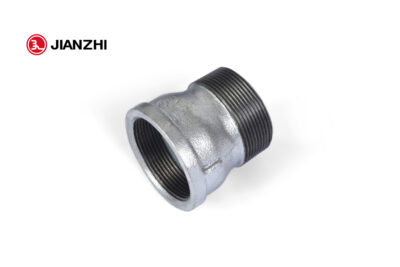
GI Reducer Pipe Fitting Socket Fig. 529A
-

Stub End Flange With Bolt Hole Fig.329
-
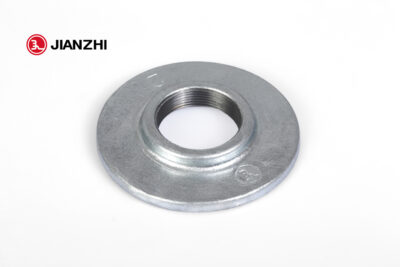
Galvanized Pipe Flange Blind Flange Fig.321
-
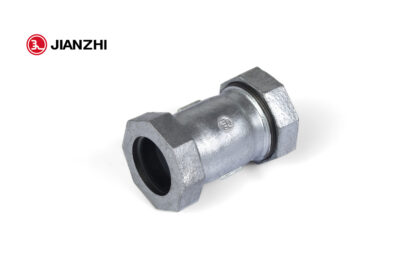
Long Compression Coupling
-
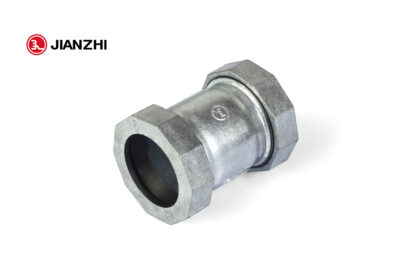
Short Compression Coupling
-
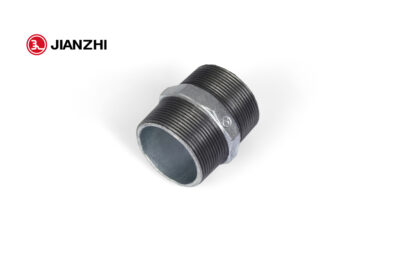
Galvanized Nipple Equal Fig.280
-
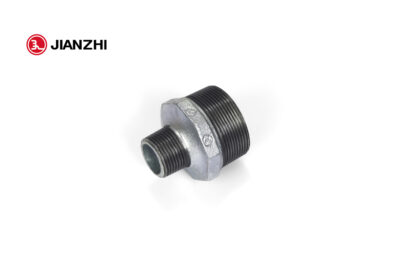
Threaded Nipple Reducer Fig.245
-
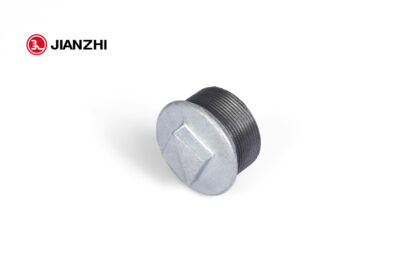
Cast Iron Pipe Fittings Galvanized Plug Beaded Fig.290
Malleable iron fittings are composed of a unique blend of elements, including carbon (2.2% to 2.8%), silicon (1.0% to 1.8%), manganese (0.3% to 0.8%), with low sulfur (≤0.2%) and phosphorus (≤0.1%) contents, imparting exceptional physical and chemical properties.
Chemical composition:
wC=2.2%~2.8%,wSi=1.0%~1.8%,wMn=0.3%~0.8%,wS≤0.2%,wP≤0.1%
Advantages of Malleable iron fittings:
Malleable iron fittings, as an important form of application for the material, stand out in the market with their unique advantages:
1.The combination of high strength and toughness ensures stable system operation.
2.Corrosion-resistant and anti-aging, prolonging the maintenance cycle.
3.Easy to install and maintain, reduce construction cost.
4.Conforms to international standards, reliable quality.
There are many advantages of using malleable iron pipe fittings including shock and corrosion resistance and mechanical strength. If the fittings are galvanised with highly pure zinc they can be used to transport drinking water. The narrow threads help to achieve precise alignment when sealing, reducing the likelihood of leakage from the pipes.
1.Durability:
Malleable iron fittings are highly durable, providing long-lasting performance even in demanding conditions.
2.High-Pressure Resistance:
These fittings can withstand high pressure, making them suitable for systems that require strength under heavy load.
3.Flexibility:
Malleable iron offers good ductility, allowing it to absorb vibrations and movements without cracking, ensuring reliable connections.
4.Temperature Resistance:
They perform well under both hot and cold temperatures, making them ideal for plumbing systems exposed to temperature fluctuations.
5.Corrosion Resistance (when treated):
Galvanized malleable iron fittings are corrosion-resistant, ensuring longer service life in wet or corrosive environments.
6.Ease of Installation:
The threaded design makes these fittings easy to install and connect to various piping systems, simplifying the assembly process.
Applications for Malleable Iron Pipe Fittings
- Commercial vehicle construction
- Machines for paper production
- Gas lines in petrol stations
- Oil, cooling and lubrication pipes
- Gas emulsion and pressurised air pipe work
- Sprinkler and gas fire extinguishing systems
- Cooling and air conditioning
- Sanitary, heating and gas installation
What are malleable iron fittings commonly used for in industrial applications?
Malleable iron fittings are commonly used in industrial applications such as piping systems for transporting gas, water, steam, oil, and other fluids. They are often found in HVAC systems, fire protection systems, and mechanical installations due to their strength, durability, and ability to handle high pressures.
Malleable cast iron compared to other types of iron Strength and flexibility
Here’s a list-style response comparing malleable iron to other types of iron in terms of strength and flexibility:
1.Strength:
Malleable Iron: Offers good tensile strength, making it suitable for applications that require mechanical durability.
Cast Iron: Generally has high compressive strength but is brittle, meaning it can fracture under tension or impact.
Ductile Iron: Similar to malleable iron in strength but even more durable due to its improved flexibility.
2.Flexibility:
Malleable Iron: Highly ductile, can bend or deform without breaking, allowing it to absorb shocks and handle vibration better.
Cast Iron: Very rigid and brittle, prone to cracking under stress or impact without much flexibility.
Ductile Iron: Extremely flexible, can deform under load but returns to its original shape without cracking, surpassing malleable iron in this regard.
3.Resistance to Impact:
Malleable Iron: Can withstand some degree of impact due to its malleability.
Cast Iron: Poor resistance to impact, often fractures under heavy stress.
Ductile Iron: Excellent impact resistance, making it ideal for high-stress applications.
4.Usage:
Malleable Iron: Preferred for pipe fittings and systems where both strength and flexibility are necessary.
Cast Iron: Used in applications like drainage systems, where rigidity is important, but flexibility is not.
Ductile Iron: Often used in high-demand applications like pressure pipes due to its superior strength and flexibility.
This list highlights the strengths and weaknesses of different types of iron in comparison to malleable iron.
Click here for more information about the malleable pipe fittings catalog.
